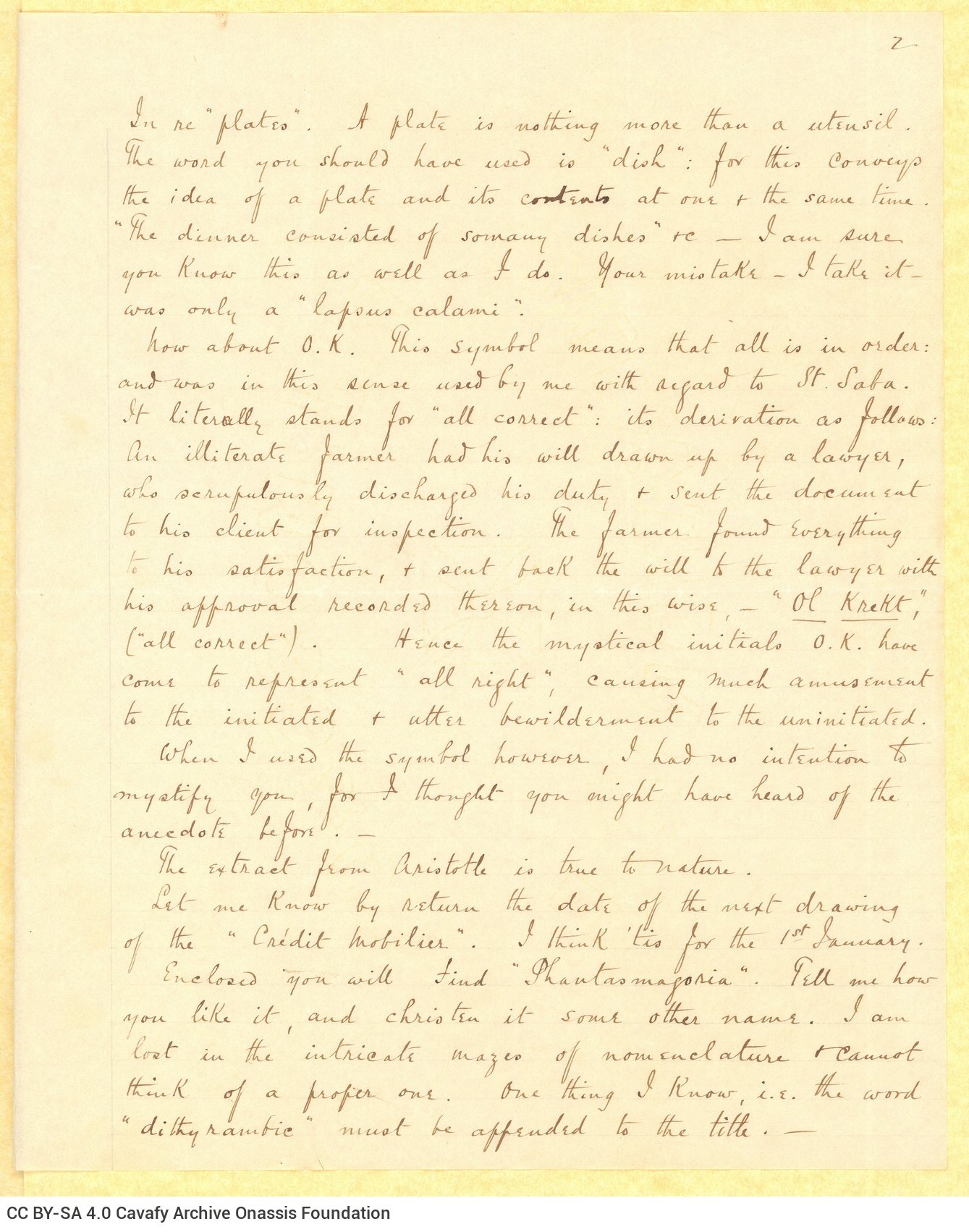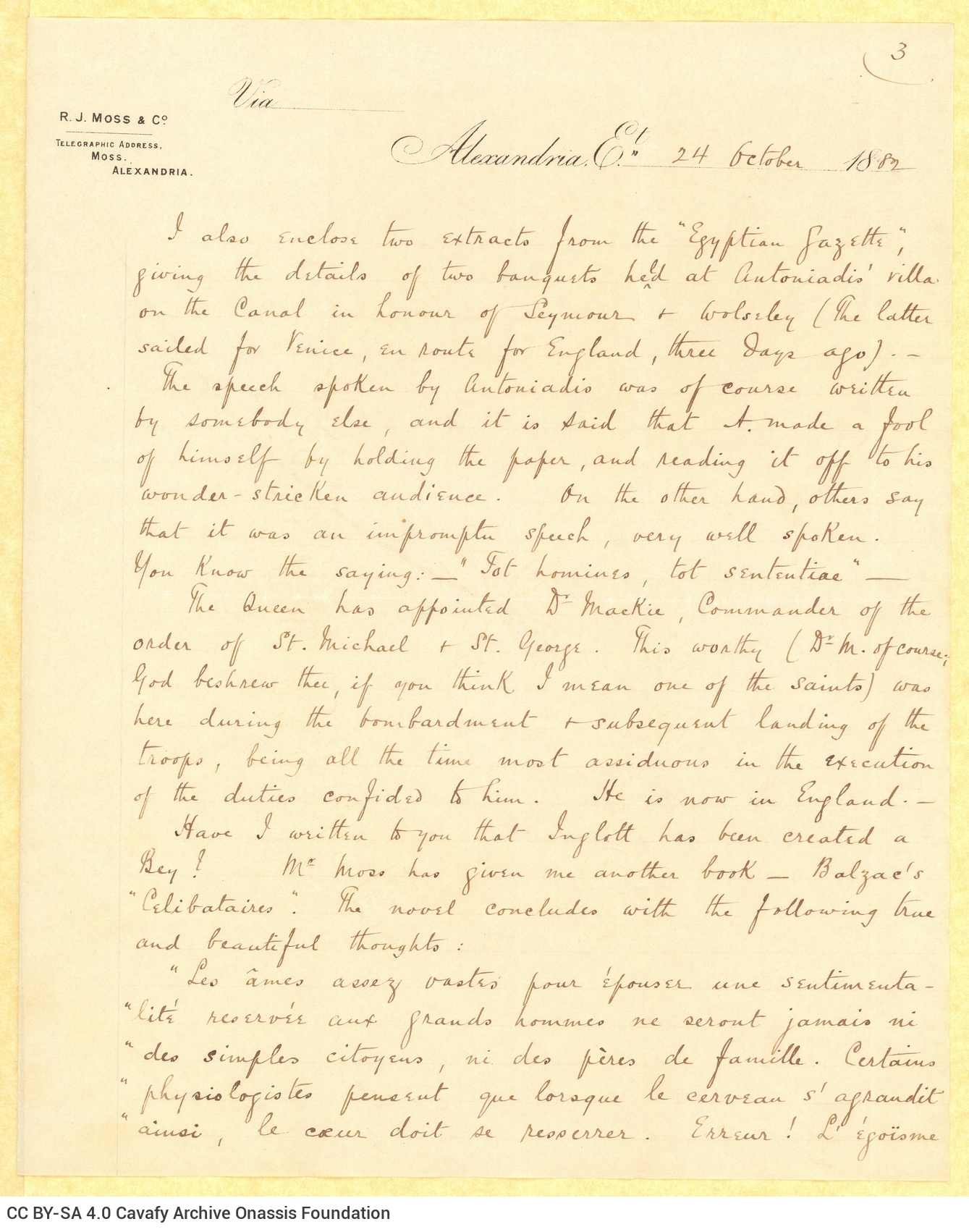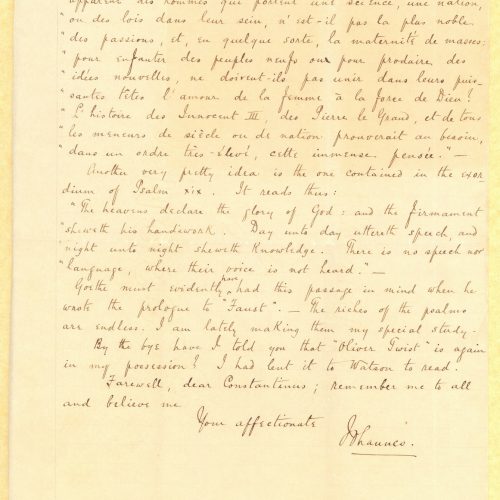υπογράμμιση
υπογράμμιση
πράσινη γραμματοσειρά
κίτρινη γραμματοσειρά
κόκκινη γραμματοσειρά
DIGITAL OBJECT DESCRIPTION
IDENTITY AREA
43.5 x 27 cm
CONTEXT AREA
CONTENT AND STRUCTURE AREA
Handwritten letter by John Cavafy to C. P. Cavafy on the first and third pages of two double sheet leterheads of R. J. Moss & Co., Alexandria. Pages 2-4 are numbered at top right. Comments on religion and atheism, and update on the situation in Alexandria. Linguistic remarks and comment on the origin of “ΟΚ”. Short quote in French.
CONDITIONS OF ACCESS AND USE AREA
Mainly English
Writing in ink. Watermark: R. J. Moss & Co Alexandria. Physical item wear: oxidations.
NOTES AREA
The transcription and editing of the letters of John Constantine Cavafy addressed to C. P. Cavafy was first carried out by Katerina Ghika; said transcriptions were subsequently uploaded to the official website of the Cavafy Archive.
John Cavafy sends C. P. Cavafy his poem “Phantasmagoria”.
ACCESS POINTS
Cavafy, John Constantine. “Letter by John Cavafy to C. P. Cavafy”. Letter, 24.10.1882. GR-OF CA CA-SF02-S01-SS02-F20-SF001-0008 (383), Onassis Foundation C. P. Cavafy Fonds. From The Digital Collection of the Cavafy Archive, edited by Onassis Foundation, Athens, last modified 01.10.2025. https://doi.org/10.26256/CA-SF02-S01-SS02-F20-SF001-0008.







